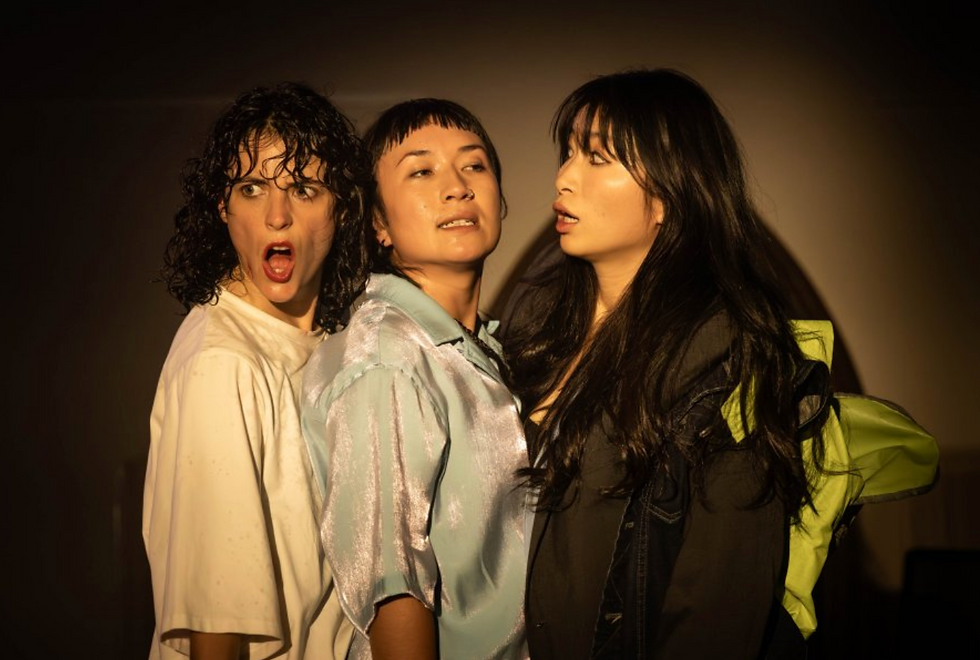Review: Hour of The Wolf at the Malthouse
- Theatre Travels

- Oct 23, 2023
- 3 min read
Reviewed by Lucy Lucas
Following the commercial success of Because the Night in 2021, Malthouse Theatre’s second foray into immersive work is Hour of the Wolf: a slicker, shorter take on the small-town gothic. Set in the fictional yet familiar Hope Hill the show takes place over the hour from three-am to four-am on the longest night of the year, a night cursed by disappearances and laced with classic-horror lore.
I decided early on to follow the actor-based stories as I had been disappointed by the lack of hidden puzzles in Because the Night and thought I might get more detail attempting to see all parts of the narrative thread. Unlike Because the Night this production has actors’ tracks loop every twenty minutes so seeing all scenes is technically possible. The friend I attended with chose the opposite path, eschewing the live stories and diving spy-like into the scenery. Without giving away spoilers he enjoyed the experience more than I did, finding tokens and following clues, though he did not have enough time to track down the pinnacle of easter eggs hidden in Hope Hill’s dark heart.
A brilliant teacher of mine once described theatre as the ‘management of tension over time’. By this definition Hour of the Wolf ultimately failed. The literal, physical immersion of audience in space came at the expense of emotional immersion, story, tension, spectacle; all elements I value in theatre. The complicated logistics of this style of work also force an unavoidable reduction in nuance. The audience must be able to follow some semblance of plot and so repetition and exposition take the place of development and layering. This meant that Hour of the Wolf was certainly an improvement on Because the Night (in terms of clarity) but simply functioning as a story is a low bar to set for a production house as established as the Malthouse. Without tension there could be no catharsis and my overall experience was ultimately disconnected and somewhat shallow.
I also found myself criticising my own choices – I should have been more adventurous, explored more, I didn’t get it. Somehow, I concluded I did theatre wrong, something I have never felt in even the most alienating of traditional performances. This was a common thread amongst friends: the lack of time to explore made us all feel FOMO whether we chose to follow the action or go our own way. I definitely felt I’d need to attend once or twice more to get the full experience, something that reinforces my resentful feeling that this skews towards a cash-grab gimmick rather than a genuine experiment in immersion.
Jethro Woodward’s sound design would be incredible if it worked as intended. Audience members are provided with headsets that bring the actors into your ear. However, a persistent, piercing static in my headphones threatened to ruin the entire experience for me and there was no way within the performance to attend to it. Outside of this the technical elements of the production were seamless and the design elements particularly impressive.
There is a misplaced idea, and I feel that Hour of the Wolf leans into this, that traditional theatre conventions are tired and staid and that all contemporary audiences are inherently seeking something more. I cannot agree. There are certainly boring and dry theatre experiences to be found left, right and centre. There are also delicious, ground-breaking and revelatory theatre events occurring constantly across our artistic landscape. For me, the electricity of any event has less to do with whether a proscenium arch is involved and much more to do with the depth of engagement and vulnerability of the creative team. This is not to denigrate the experiments of those playing with form, an essential variable that should be tested and stretched again and again, but it is important not to conflate edginess and shiny new-ness with an inherent relevance, insight or depth.
In the foyer afterwards I over-heard the phrase ‘we’re excited this will attract people who do not usually attend theatre’. I think this is a fair assumption if it is referring to people who prefer escape rooms or gaming to theatre. At $100 a ticket it would be naïve to think it meant people from socio-economic demographics currently underrepresented in Naarm’s theatre audiences. As an independent artist myself I could not help but brainstorm the many shows and opportunities I could pursue with access to the same resources needed to create this single experience and wonder if it really was worth it.
Though a genuinely unique adventure for anyone seeking detailed, atmospheric playgrounds laced with riddles, those for whom story and character are essential may find Hour of the Wolf hollow and ultimately unsatisfying.

Image Credit: Pia Johnson




